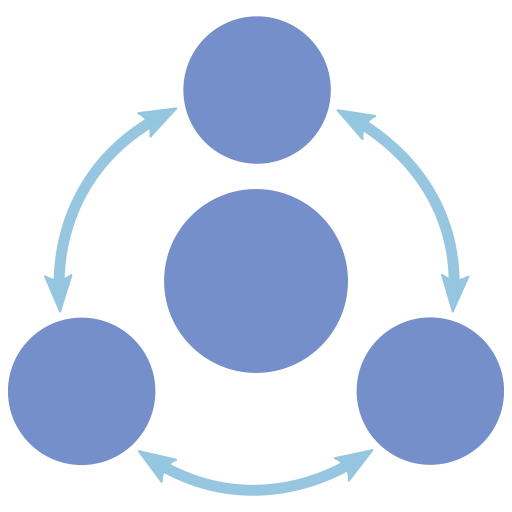Download Publication Data
If you are looking for files associated to our publications, please click the following link. You will be forwarded to our publication data site.
All publications
Selective activation of dynamics in kinetically frozen supramolecular polymer bottlebrush assemblies
Hans F. Ulricha, b, Tobias Kleina,b, Ziliang Zhaoc, d, Zoltán Cseresnyése, Pablo Carravillac, d, Ruman Gerste, Alina Kasbergg, Frederic P. Scharfenberga, Marc Thilo Figgee f, Christian Eggelingb, c, d, Johannes C. Brendela, b, g, *
a Laboratory of Organic and Macromolecular Chemistry (IOMC), Friedrich-Schiller-University Jena, Humboldtstraße 10, 07743 Jena, Germany.
b Jena Center for Soft Matter (JCSM), Friedrich-Schiller-University Jena, Philosophenweg 7, 07743 Jena, Germany.
c Institute for Applied Optics and Biophysics, Friedrich Schiller University Jena, 07743 Jena, Germany.
d Leibniz Institute of Photonic Technology e.V., member of the Leibniz Centre for Photonics in Infection Research (LPI), 07743 Jena, Germany.
e Applied Systems Biology, Leibniz Institute for Natural Product Research and Infection Biology, Hans Knöll Institute (HKI), 07743 Jena, Germany.
f Institute of Microbiology, Faculty of Biological Sciences, Friedrich-Schiller-University Jena, 07743 Jena, Germany.
g Macromolecular Chemistry I, University of Bayreuth, Universitätsstr. 30, 95447 Bayreuth, Germany.
Supramolecular assemblies are typically characterized by their dynamic nature due to the comparable weak non-covalentinteractions. While these properties confer adaptability, stability issues may limit application in areas such as drug delivery ortissue engineering. Here, we show that supramolecular assemblies of amphiphilic polymers containing benzenetrispeptide andbenzenetrisureas motifs are inherently stable and non-dynamic at ambient conditions, but […]
Complex-mediated evasion: modeling defense against antimicrobial peptides with application to human-pathogenic fungus Candida albicans
Yann Bachelot, Anastasia Solomatina & Marc Thilo Figge#
Understanding the complex interplay between host and pathogen during infection is critical for developing diagnostics and improving therapeutic interventions. Among the diverse arsenal employed by the host, antimicrobial peptides (AMP) play a key role in the defense against pathogens. We propose an immune evasion mechanism termed “Complex-mediated evasion” (CME), that allows pathogens to protect themselves […]
Image-based quantification of Candida albicans filamentation and hyphal length using the open-source visual programming language JIPipe
Jan-Philipp Praetorius*, Sophia U. J. Hitzler*, Mark S. Gresnigt#, Marc Thilo Figge#
The formation of hyphae is one of the most crucial virulence traits the human pathogenic fungus Candida albicans possesses. The assessment of hyphal length in response to various stimuli, such as exposure to human serum, provides valuable insights into the adaptation strategies of C. albicans to the host environment. Despite the increasing high-throughput capacity live-cell imaging and data generation, […]
Convergent evolution of a fungal effector enabling phagosome membrane penetration
View ORCID ProfileLei-Jie Jia, Freddy Alexander Bernal, View ORCID ProfileJeany Soehnlein, Johannes Sonnberger, View ORCID ProfileIsabel Heineking, Muhammad Rafiq, View ORCID ProfileZoltan Cseresnyes, Franziska Kage, Franziska Schmidt, View ORCID ProfileRasha Zaher, Peter Hortschansky, Shivam Chaudhary, Xuemin Gong, View ORCID ProfileJan Schirawski, View ORCID ProfileMarc Thilo Figge, View ORCID ProfileBernhard Hube, View ORCID ProfileAxel A. Brakhage
The ability of pathogens to evade phagosomal killing is critical for their pathogenicity. Previously, we had identified the HscA effector protein in the clinically important fungal pathogen Aspergillus fumigatus, which redirects conidia-containing phagosomes from the degradative to the non-degradative pathway. Here, we discovered a pathogenic form of this surface protein, determined by a single tyrosine residue […]
Deciphering respiratory viral infections by harnessing organ-on-chip technology to explore the gut–lung axis
Hristina Koceva, Mona Amiratashani, Parastoo Akbarimoghaddam, Bianca Hoffmann, Gaukhar Zhurgenbayeva, Mark S. Gresnigt, Vanessa Rossetto Marcelino, Christian Eggeling, Marc Thilo Figge, Maria-João Amorim and Alexander S. Mosig
The lung microbiome has recently gained attention for potentially affecting respiratory viral infections, including influenza A virus, respiratory syncytial virus (RSV) and SARS-CoV-2. We will discuss the complexities of the lung microenvironment in the context of viral infections and the use of organ-on-chip (OoC) models in replicating the respiratory tract milieu to aid in understanding […]
Intuitive Abläufe für die automatisierte Bildanalyse. JIPipe als quelloffene Softwarelösung für FAIRe Bildanalyse.
Gerst R, Cseresnyés Z, Figge MT# (2025) Online-Publikation bei Wiley Analytical Science
Die zunehmende Verfügbarkeit komplexer bildgebender Verfahren erfordert skalierbare und reproduzierbare Softwarelösungen, die in der Lage sind, alle in hochauflösenden, multimodalen Bilddaten enthaltenen Informationen zu nutzen. JIPipe ist eine quelloffene, metadatengetriebene Bildanalyseplattform zur visuellen Erstellung von Analysepipelines ohne Programmierkenntnisse. Das System ist für ein breites Anwendungsspektrum konzipiert und wurde bereits erfolgreich in Studien der Molekular- und […]
Spatiotemporal modeling quantifies cellular contributions to uptake of Aspergillus fumigatus in the human lung.
Commun Biol
Saffer C, Timme S, Ortiz SC, Bertuzzi M, Figge MT
Rapid detection of microbial antibiotic susceptibility via deep learning supported analysis of angle-resolved scattered-light images of picoliter droplet cultivations
Sensors and Actuators B: Chemical
Sarkar A*, Graf M*, Svensson CM, Munser A-S, Schröder S, Hengoju S, Rosenbaum M, Figge MT
The progressive increase in microbial resistance to antibiotics is a global health threat that requires solutions for rapid and reliable determination of antibiotic susceptibility in order to select appropriate antibiotics and dosages prior to treatment. We have established a screening platform that enables the detection of cell growth after just a few cell divisions. Our […]
Tracking the uptake of labelled host-derived extracellular vesicles by the human fungal pathogen Aspergillus fumigatus
microLife
Visser C, Rivieccio F, Krüger T, Schmidt F, Cseresnyés Z, Rohde M, Figge MT, Kniemeyer O,Blango MG*, Brakhage AA*
Extracellular vesicles (EVs) have gained attention as facilitators of intercellular as well as interkingdom communication during host-microbe interactions. Recently we showed that upon infection, host polymorphonuclear leukocytes produce antifungal EVs targeting the clinically important fungal pathogen Aspergillus fumigatus; however, the small size of EVs (< 1 µm) complicates their functional analysis. Here, we employed a more […]
Aspergillus fumigatus-derived gliotoxin impacts innate immune cell activation through modulating lipid mediator production in macrophages
Immunology
Günther K, Nischang V, Cseresnyés Z, Krüger T, Sheta D, Abboud Z, Heinekamp T, Werner M, Kniemeyer O, Beilhack A, Figge MT, Brakhage AA, Werz O#, Jordan PM#
Gliotoxin (GT), a secondary metabolite and virulence factor of the fungal pathogen Aspergillus fumigatus, suppresses innate immunity and supports the suppression of host immune responses. Recently, we revealed that GT blocks the formation of the chemotactic lipid mediator leukotriene (LT)B4 in activated human neutrophils and monocytes, and in rodents in vivo, by directly inhibiting LTA4 […]





